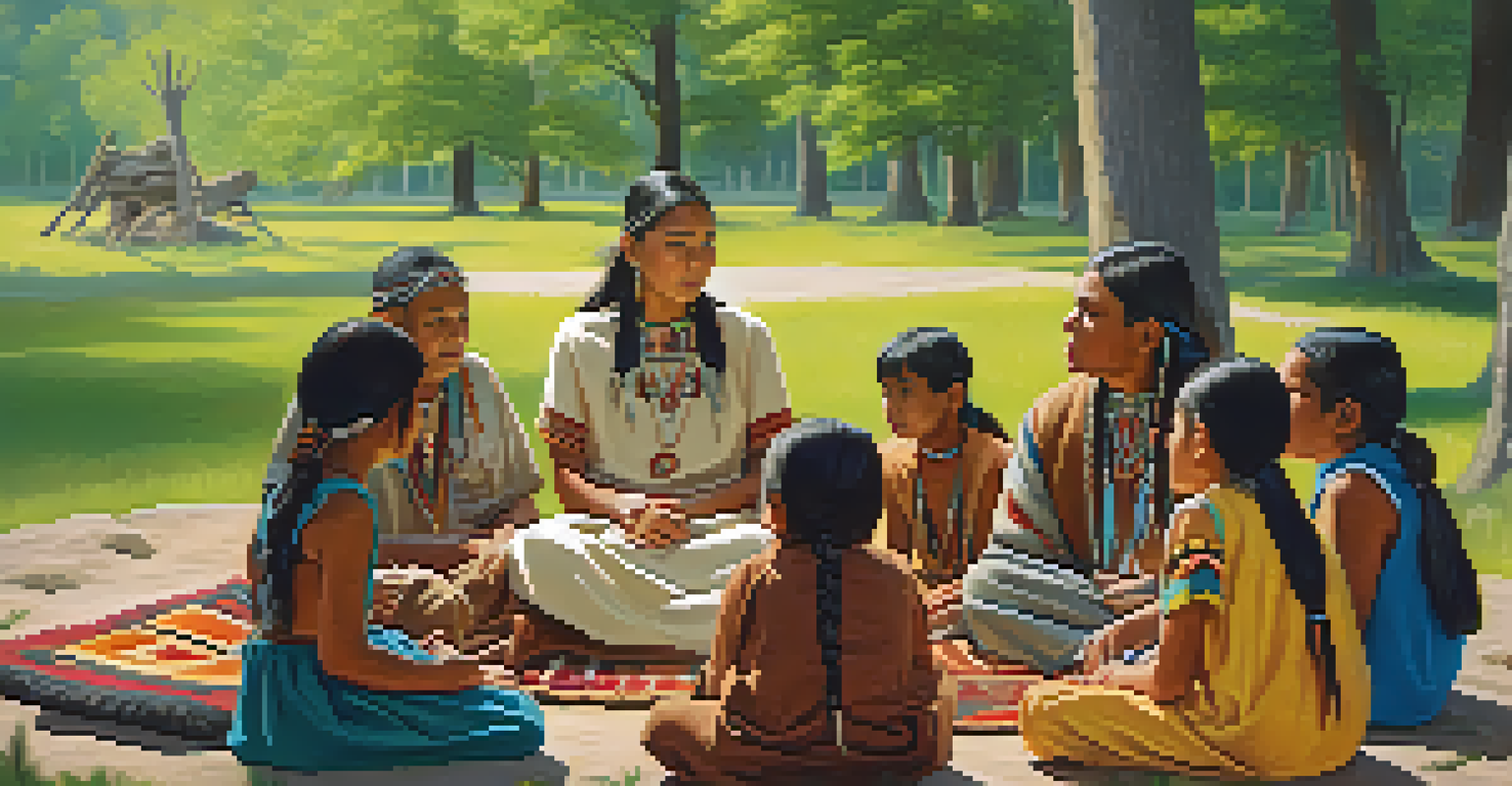The Role of Native American Culture in Arizona's Literature

The Rich Tapestry of Native American Heritage
Arizona is home to a diverse array of Native American tribes, each with its own unique culture and traditions. This rich tapestry of heritage plays a pivotal role in shaping the state's literature. Authors often draw inspiration from the stories, beliefs, and values that have been passed down through generations, enriching their narratives with authenticity.
We are all story. And every story we tell is true.
For example, the oral traditions of the Navajo and Hopi tribes serve as foundational elements in many literary works. These stories not only preserve history but also convey important life lessons and morals. By weaving these elements into their writing, authors can create a deeper connection to the land and its people, resonating with readers on a personal level.
Additionally, the influence of Native American culture fosters a greater understanding of the complexities of identity and belonging. As literature reflects the experiences of Indigenous peoples, it invites readers to explore themes of resilience, spirituality, and community, ultimately enriching the literary landscape of Arizona.
Key Themes in Native American Literature
Native American literature in Arizona often explores themes such as connection to the land, spirituality, and cultural identity. These themes are not merely decorative; they serve as crucial narrative drivers that shape the characters and plots in various works. Authors like Leslie Marmon Silko and N. Scott Momaday highlight these themes, allowing readers to gain insight into the Indigenous worldview.

For instance, the concept of land as a living entity is prevalent in many Native American stories. This perspective contrasts with the more Western view of land as a resource to be exploited. By emphasizing this connection, writers invite readers to reflect on their own relationship with nature and the environment, fostering a sense of stewardship and respect.
Cultural Heritage Shapes Literature
Native American tribes in Arizona influence literature by providing rich cultural narratives and themes that resonate with readers.
Moreover, exploring cultural identity is essential in understanding the experiences of Native Americans in contemporary society. Literature serves as a platform for expressing the challenges and triumphs faced by Indigenous individuals, making their voices heard in a world that often overlooks them.
Influential Native American Authors in Arizona
Several authors from Arizona have made significant contributions to Native American literature. One such figure is the acclaimed poet and novelist, Joy Harjo, who brings the richness of her Muscogee heritage to her writing. Harjo's works often intertwine personal experiences with broader cultural narratives, showcasing the beauty and complexity of Native American life.
The stories we tell are the stories that become our lives.
Another notable author is Simon Ortiz, a member of the Acoma Pueblo, whose poetry and prose reflect the struggles and resilience of Indigenous peoples. Ortiz's storytelling captures the essence of place, memory, and identity, allowing readers to experience the world through Native eyes. His works often challenge stereotypes and promote a deeper understanding of Native American culture.
These authors, along with many others, are not just storytellers; they are cultural ambassadors. Through their literature, they share the richness of their traditions and advocate for a more inclusive narrative within the broader American literary canon.
The Impact of Oral Traditions on Literature
Oral traditions play a vital role in Native American literature, serving as a foundation for storytelling practices. These traditions emphasize the importance of voice, rhythm, and communal participation, elements that often translate into written works. Authors frequently incorporate these oral storytelling techniques into their prose and poetry, creating a unique reading experience that echoes the spoken word.
For example, the use of repetition, imagery, and metaphor found in oral storytelling can be seen in the works of many contemporary Native American writers. This stylistic approach not only honors their cultural heritage but also captivates readers, drawing them into the narrative in a way that feels both familiar and profound.
Oral Traditions Enhance Storytelling
Oral storytelling techniques are integral to Native American literature, enriching written works with rhythm, voice, and communal participation.
Moreover, the blending of oral traditions with written literature highlights the fluidity of storytelling across mediums. As authors strive to preserve these traditions while adapting them for modern audiences, they create a dynamic dialogue between past and present, ensuring that Indigenous stories continue to thrive.
Cultural Preservation Through Literature
Literature serves as a powerful tool for cultural preservation among Native American communities in Arizona. By documenting their stories, traditions, and experiences, authors contribute to the ongoing legacy of their cultures. This act of storytelling not only preserves the past but also empowers future generations to connect with their roots.
For many Native American writers, the act of writing is an assertion of identity and resilience. They challenge the dominant narratives that have historically marginalized their cultures, reclaiming their voices through literature. This reclamation is crucial for fostering pride within Indigenous communities and promoting awareness among non-Native readers.
Additionally, literature acts as a bridge between cultures, fostering understanding and dialogue. By sharing their stories, Native American authors invite readers from all backgrounds to engage with their histories, creating a more inclusive literary landscape that honors diversity.
Contemporary Issues in Native American Literature
Contemporary Native American literature often addresses pressing social issues, such as environmental justice, cultural appropriation, and the impact of colonization. Authors use their platforms to raise awareness about these topics, challenging readers to confront uncomfortable truths. This commitment to social justice is a unifying thread in much of Arizona's Native American literature.
For instance, many writers highlight the effects of climate change on Indigenous lands and communities. By intertwining personal narratives with broader environmental themes, they emphasize the urgent need for action and advocacy. This approach not only educates readers but also fosters a sense of responsibility towards the planet.
Contemporary Issues in Native Writing
Modern Native American literature addresses social issues like environmental justice and cultural appropriation, urging readers to engage with these critical topics.
Moreover, the exploration of cultural appropriation in literature encourages important conversations about respect and representation. By addressing these issues, Native American authors assert their right to define their own narratives and challenge mainstream portrayals that often misrepresent or exploit their cultures.
The Future of Native American Literature in Arizona
The future of Native American literature in Arizona looks promising, as a new generation of writers emerges to share their stories. These authors are not only continuing the traditions of their predecessors but also embracing contemporary themes and innovative storytelling techniques. This evolution is vital for keeping Native American literature relevant and resonant in today's world.
As more Indigenous voices gain recognition in the literary world, there is a growing appetite for diverse perspectives. This shift encourages publishers and readers alike to seek out and celebrate Native American literature, fostering a sense of community and solidarity among writers and their audiences.

Furthermore, the integration of technology and digital platforms is opening new avenues for storytelling. Writers can now reach wider audiences, sharing their work through blogs, social media, and e-books. This accessibility is essential for promoting Native American literature, ensuring that these vital narratives continue to thrive for generations to come.